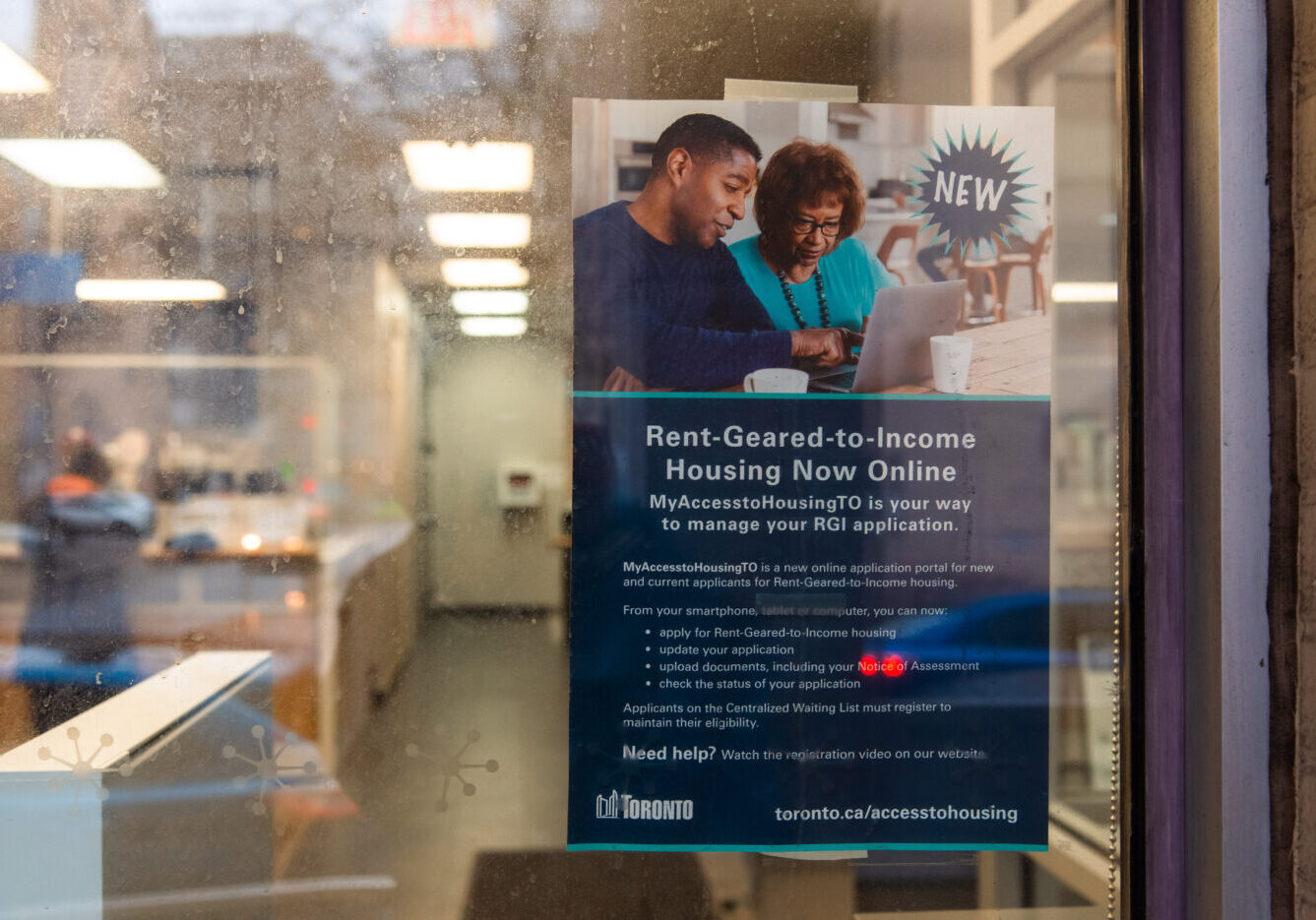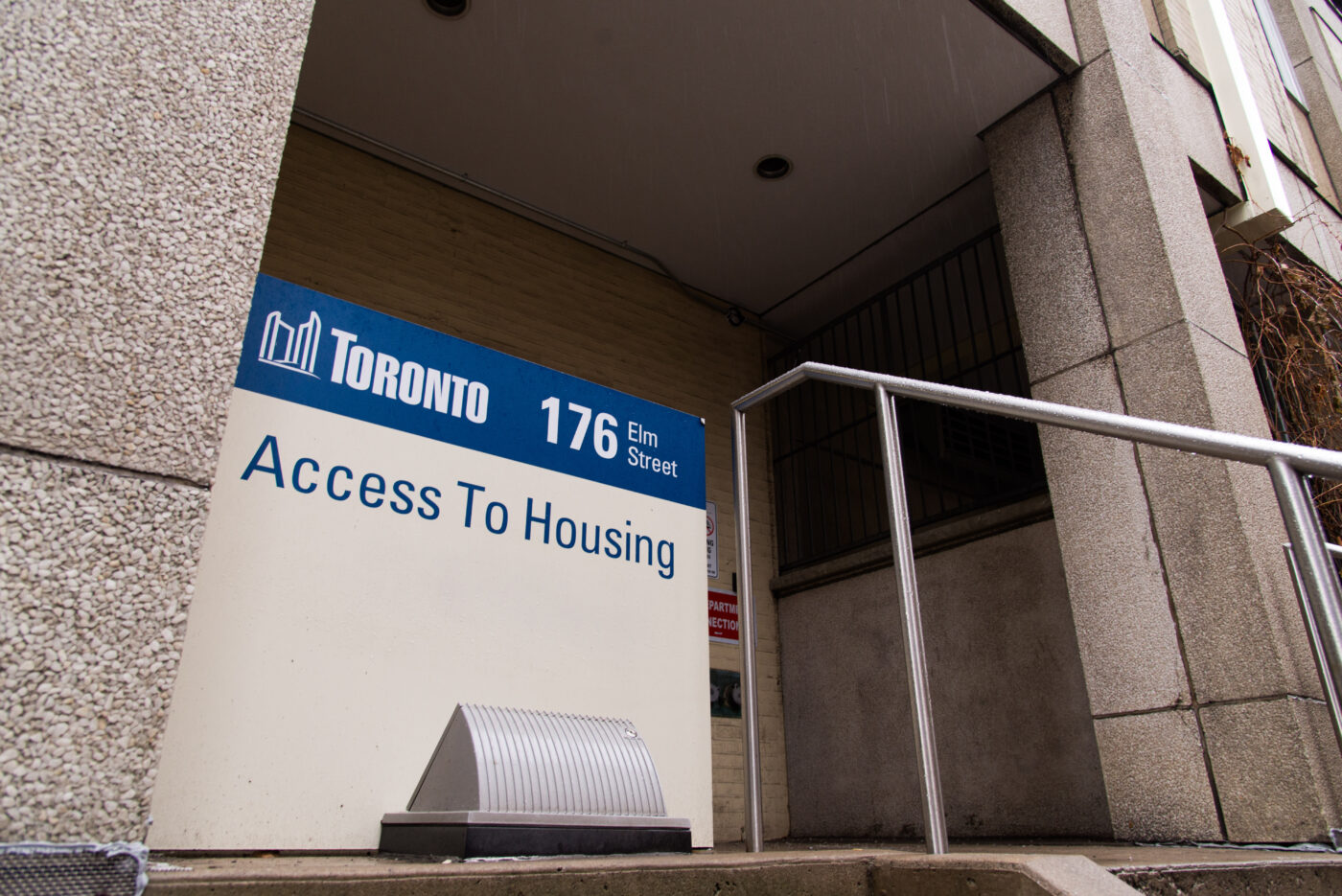THE GREEN LINE
ACTION JOURNEY STORY
Homeless shelters in Toronto are pushed to their limit. Social housing can't close the gap.
The City only houses about 500 unhoused people a year. Meanwhile, 99 per cent of emergency shelter spots are occupied every night in Toronto.

Dan Trayes protesting against the privatization of healthcare at Queen's Park in September 2023. Unhoused for 19 years, Trayes now has a subsidized apartment in Little Jamaica, but feels that without it he'd be homeless again.
📸: Dan Trayes/Twitter.

ALOYSIUS WONG
Toronto Metropolitan University Master of Journalism graduate. Lives in North York where he prays that the Eglinton Crosstown will eventually be completed.
March 11, 2024
This story is part of The Green Line's Action Journey on Toronto's housing crisis. Our seven-part story series examines the impossible climb towards home ownership, precarious rental situations and the pipeline from unaffordability to living on the streets.
Sign up for our storytelling event and Story Circle on March 19, 2024, where attendees will share their experiences with the city's housing market and brainstorm community-led solutions to navigate housing in Toronto. Dinner and refreshments will be provided.
Dan Trayes knows first-hand the harsh reality of homelessness in Toronto — and how it’s getting worse.
The 46-year-old was chronically homeless here for nearly 20 years. From 1997 to 2016, he didn’t have stable housing, and stayed in nearly every single shelter in the city of Toronto. “Straight up, it sucked,” he says.
But between when he was first homeless in his 20s and today, Trayes says the situation has only become more dire. Back then, there was more of a “family atmosphere” in the community.
“Everybody shared, ‘Oh, where are you going today?’ Okay, today they got a meal here today. They got this here,” he explains. “It was a different atmosphere back then. Whereas, now, it's everybody's all for themselves.”
Trayes says an unfortunate combination of Mike Harris-era social services cuts, mental health and addiction issues, as well as what he describes as his own poor decision-making, contributed to his long-term homelessness.
Around 2005, Trayes applied for rent-geared-to-income (RGI) housing through a shelter he was staying in. But when the staff member in charge of the shelter left for medical treatment, he never received the necessary acceptance letters to grant him access to subsidized housing.
“It was miscommunication,” he explains. “I don't blame nobody. Life is what it is, right? But that's what happened in my case.”

A poster outside the Access To Housing office tells people they can manage their applications for rent-geared-to-income housing online.

WAITING FOR AFFORDABILITY
Most Torontonians have to wait a decade or longer for subsidized housing.
The City of Toronto currently estimates that the average wait time for affordable, RGI housing is between 10 years for a studio apartment (eight specifically for seniors) to 15 years for a unit with three bedrooms or more. As of December 2023, there are over 85,000 households on the waitlist, including 34,564 seniors and 21,273 households with dependents.
And while there are around 85,500 social housing units funded by the City of Toronto, including more than 71,000 RGI units, very few people each year are actually housed. In 2023, the City placed 2,788 people, 494 of whom were homeless. Torontonians in need are encouraged by the City to “consider RGI housing as a long-term housing plan, not an immediate solution to housing needs or emergency situations.”
Eventually housed in a subsidized apartment in Little Jamaica in 2016, Trayes is grateful today. He’s also since managed to find some work, having assisted Ward 24 Scarborough-Guildwood Coun. Paul Ainslie from 2018 to 2020.
But Trayes sometimes still feels like his current situation is precarious.
“Basically, if I had to leave tomorrow, I'd be homeless again,” he says. “There's no way anybody is leaving affordable housing or RGI units — the real affordable housing — unless they're making at least like four or five grand a month.”

The Access To Housing office on 176 Elm St. is where Torontonians apply for subsidized housing. The current estimated wait time for rent-geared-to-income housing is between 10 to 15 years, depending on the size of the unit.
📸: Aloysius Wong/The Green Line.
THROUGH THE ROOF
Torontonians who can’t afford housing are at risk of becoming homeless.
The continuous strain on our shelter system shows that the demand for emergency and transitional housing is higher than ever. Pre-pandemic, City-run shelters operated at an average of 94.5 per cent capacity, according to a Green Line analysis of City of Toronto data. As of February 2024, 99 per cent of the 7,700 rooms and beds in Toronto shelter services are consistently occupied.
Most days, there are fewer than 100 unoccupied spots across the city, even as the City’s overall capacity has increased by about 2,500 rooms and beds since 2021.
And as the shelter system remains at capacity, more and more people are forced to stay on the streets. City of Toronto data shows that in 2021, an average of 30 people a day called Central Intake services seeking emergency shelter but were not matched with a bed. Now, between 100 and 200 callers every day are unable to find shelter through municipal services.
For all the talk about affordable housing, Trayes believes there’s still too little help for the homeless. “It's all a great singing tune, but it does not affect those that are living on the streets. It does not affect those that are living in shelters, those that come here from other countries for the first time,” he says.
He adds that the only way this problem will be addressed is if people in power work past “singular narratives” to come together on issues they can agree on.
“It seems like they argue more about themselves than they do about us and the issues. So make it more about community and less about what's going on in your TV.”
Next in The Green Line Housing Crisis Action Journey Story Series: Why everyone needs to step up to solve Toronto's housing crisis
Fact-Check Yourself
Sources and
further reading
Don't take our word for it —
check our sources for yourself.